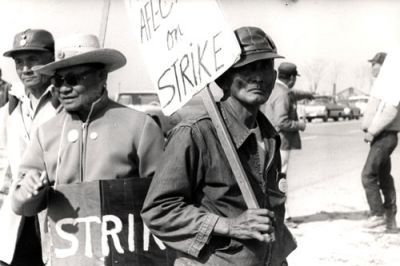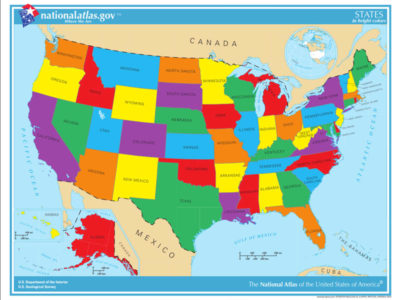Guest Blogger Michael Panfil: Supreme Court Declines to Hear New York and Illinois Clean Energy Cases Challenging Zero Emission Credits
Cert. Denials Have Significant Implications for Environment, Human Health, and Clean Energy
States are on the leading edge in crafting pathbreaking climate and clean energy policy. They rely on longstanding authority to do so to further their citizens’ welfare and wellbeing. That bedrock authority recently received important reaffirmation from the Supreme Court, which last month declined petitions for review in two cases with important implications for power sector regulation and state authority to promote clean energy generation as a means to reduce the emissions that cause climate change. In declining review, the Supreme Court left intact 2nd and 7th Circuit Court decisions in Electric Power Supply Ass’n v. Star (18-868) and Electric Power Supply Ass’n v. Rhodes (18-879); those decisions upheld the constitutionality of state climate policies in Illinois and New York, respectively.
The Supreme Court’s action is immediately important to New York and Illinois, providing final confirmation to each state that their policies will remain intact after years in federal court. The action’s impact is far more reaching, however, acting as an important guidepost to all states by sustaining greenhouse gas reduction authority and flexibility in the power sector.
The policies at issue
The New York and Illinois policies at issue share may of the same features. Both “Zero Emission Credit” (ZEC) policies are part of larger, trailblazing clean energy policy packages structured to confront climate change head on. Both seek to compensate nuclear resources for the emissions reduction they provide, as a bridge to a clean energy future without risk of backsliding on decarbonization mandates. Both base the level of compensation on the social cost of carbon, which seeks to measure the economic damage of the emissions that cause climate change.
Most significantly, both policies were premised upon a fundamental goal: to cut climate pollution and drive clean, renewable, and efficient power to improve human health and environment. The litigation over the policies’ validity focused on whether the means the states employ to achieve this goal is consistent with the proper constitutional relationship between state and federal jurisdiction.
Circuit court cases
Plaintiffs argued that the authority the states relied upon in creating the ZECs violated the Supremacy and Commerce Clauses of the U.S. Constitution. The plaintiffs reasoned that the ZEC policies provided compensation to a particular resource type, which in turn improved that resource owner’s bottom line. Doing so, they asserted, encroached on both the prices paid to all resource owners through federally regulated power markets – an alleged Supremacy Clause violation – and the viability of resources in other states – an alleged dormant Commerce Clause violation.
The Circuit Courts (and federal district courts before them) disagreed, concluding that the ZEC policies were constitutional. The policies, at their core, were expressions of two states steadfast in their desire to protect and promote their citizens’ health and wellbeing. Power sector legislation itself has been written to carve out this important role for states, “drawn with meticulous regard for the continued exercise of state power.” Illinois and New York acted on climate, and the courts rightfully recognized that act as valid, reaffirming that the constitution does not “cut the States off from legislating on all subjects relating to the health, life, and safety of their citizens, [just because] the legislation might indirectly affect the commerce of the country.” The Supreme Court’s decision leaves these conclusions intact.
Implications for the future
Legal battles over power sector regulation and the role of states have become more common in recent years. The Court’s decision not to disturb the lower court opinions is an important marker, with significant and multiple impacts. Most proximate and immediate, states now have a roadmap and reference by which they can construct climate and clean energy policies without fear of lengthy legal battles. State climate and clean energy policies, such as renewable portfolio standards and clean energy procurement, can be designed and implemented with confidence. This certainty itself is valuable; state actors can take bold action on climate without the uncertainty litigation necessarily casts.
The decision has further reach, however, with implications that will reverberate throughout the foundation of the power sector. The appellate courts reached their decision in favor of Illinois and New York with full understanding that the federal versus state issues raised by plaintiffs were emblematic of a jurisdictional tug-of-war broadly applicable to the entire power sector. Here, the courts recognized and reiterated that the federal- and state-regulated features of the grid are not “hermetically sealed from each other.” As such, the courts eschewed a rigid jurisdictional framework, instead holding that power sector activities should be considered in light of the many necessary physical and jurisdictional intersections between state and federal entities.
This approach matches how the power sector itself functions, which requires partnerships between local, state, regional, and federal actors to effectively run an electric grid with interconnected inter- and intrastate components. It acknowledges the on-the-ground realities of an ongoing transformation in the energy sector by equipping courts with a framework that recognizes resources like energy storage, solar rooftops, and energy efficiency are best regulated when all regulators are empowered to work together and in recognition of overlapping roles and responsibilities.
Next steps
The legality of the ZEC policies is now a matter of settled law. Jurisdictional questions in the power sector are expected to continue, however, as increasing innovation and modernization continues to spur grid evolution.
As activity emerges, the ZEC decisions will serve as foundational guideposts. The courts’ consistent interpretation of the underlying law, embrace of shared federal and state responsibility, and clear defense of state authority to craft climate policy foundational to safeguard the health and well-being of its residents will guide the discussion.
Michael Panfil is the Director of Federal Energy Policy and Senior Attorney for the Environmental Defense Fund’s Clean Energy Program.
Reader Comments
One Reply to “Guest Blogger Michael Panfil: Supreme Court Declines to Hear New York and Illinois Clean Energy Cases Challenging Zero Emission Credits”
Comments are closed.







Good news for state government. Responsible state policies that reduce carbon emissions below federal standards are good for the environment and our health.
However, nuclear energy is potentially bad news for the environment and even worse news for our health — like putting out a fire (CO2) with a volcano (nuclear radiation). When consumption of fossil fuels first began, there was little, if any, thought about carbon emissions. Where did that get us?
Today, there are about 90,000 metric tons of nuclear waste at nuclear facilities in the US which will retain harmful levels of radiation for about 50,000 years (Existing onsite storage bins only last about 50 years, which is only 1/1000 of what’s needed). Nuclear waste was supposed to be stored underground at Yucca Mountain in Nevada, until somebody asked the good citizens of Nevada. Guess what? They don’t want it.
“Clean nuclear energy” is like “clean coal.” There’s no such thing. Both energy sources produce waste, and nuclear waste is far worse than CO2.
State energy policies that advance wind, solar and other alternatives to fossil fuels are generally good. Energy policies that promote nuclear energy are generally bad.